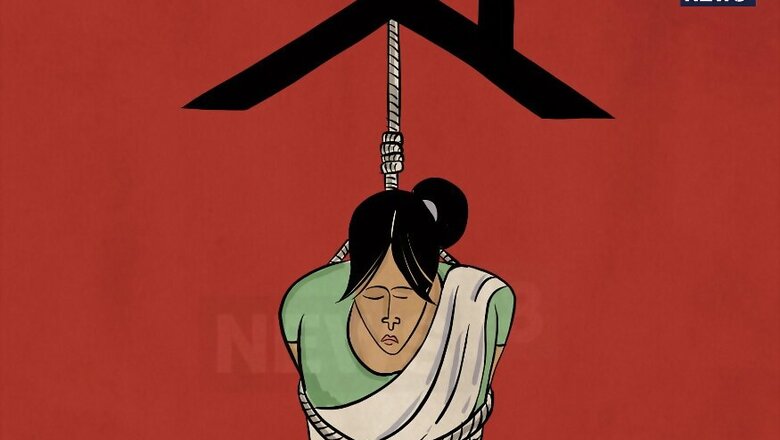
views
A Thomson Reuters survey ranked India as the world's most dangerous country for women, ahead of the war-torn Afghanistan and Syria. The poll, which surveyed 548 global experts on six different indices — healthcare, discrimination, cultural traditions, sexual and non-sexual violence, and human trafficking — found India top the three: cultural traditions, sexual violence and human trafficking.
Meanwhile, the National Commission of Women (NCW) and the Ministry of Women and Child Development rejected the survey outright, with the latter saying that the opinion poll is “an effort to malign the nation and draw attention away from real improvements seen in recent years".
The government shouldn’t complain, though. The 2016 National Crime Records Bureau (NCRB) data shows that a woman in India was raped every 13 minutes and six women gang-raped every day. Not only that, every 69 minutes a bride was killed for dowry; 20 foetus and infants were murdered each month and about the same number of women attacked with acid every month.
The latest official crime statistics further found a 2.9 per cent increase in the total crime committed against women — from 3,29,243 in 2015 to 3,38,954 in 2016.
In India, there are a number of evil cultural traditions that account for violence against women. These include female infanticide and prenatal sex selection, early marriage, dowry-related violence, female genital mutilation (FGM), “honour” crime, and maltreatment of widows. Domestic violence, however, remains the most neglected.
Patriarchy and the subordinate role of women throughout their lifespan leads to abuse of some form in their household. A study by Washington-based International Center for Research on Women (ICRW) and United Nations Population Fund (UNFPA) found that as high as 60 per cent men admitted to violence against their wife or partner at some point in their lives.
Every third woman, since the age of 15, has faced the domestic violence of various forms in the country, the National Family Health Survey (NHFS-4) reported. Meanwhile, women reporting physical abuse in rural and urban areas stood at 29 per cent and 23 per cent, respectively.
According to the National Family Health Survey-4, almost 30 per cent of married Indian women between the age of 15 and 49 reported experiencing spousal violence at least once. More than half of the married woman in Manipur faced the ferocity of their partner; in Bihar and Arunachal Pradesh, too, the condition of women remains palpable: about half of the total married women between 15-49 years faced spousal violence in the year 2015-16.
In 2005, a legislation — Protection of Women from Domestic Violence Act (PWDVA) — was instituted to protect women from domestic violence. It’s a holistic civil act, which includes all forms of physical, emotional, verbal, sexual, and economic violence and also threats to do the same. A decade into the PWDVA shows that over 10 lakh cases were filed under the sections “cruelty by husband and relatives” and “dowry-related deaths”. However, despite the law having been enacted in 2005, the NCRB started collecting data under it only since 2014. Cases registered under the abetment of suicide of women also suggest an increase of 34 per cent from 3,034 in 2014 to 4,060 in 2015; and that of violation of the PWDVA, there’s an increase of 8 per cent from 426 in 2014 to 461 in 2015.
However, this data does not account for the three sections of the Indian Penal Code — Section 498 A for cruelty by husband and his relatives, Section 304 B for dowry deaths and Section 306 for abetment of suicide — which, in fact, indicate the actual incidents of domestic violence.
PWDVA also mandates the registering of cases, dealing with protection from husband and relatives and maintenance in cases of domestic violence, to be reported directly with the court. That data, however, is not recorded by the NCRB and the cases thereof remain inaccessible.
Moreover, further trends reflect the continuing domestic abuse against women. Indian women are 18 times more prone to fire-related deaths than Pakistani women and 38 times more than Chinese women, an analysis of global disease data by the Institute for Health Metrics and Evaluation claimed. NCRB data reveals that about 17,700 Indians died due to fire accidents in 2015, of which 10,925 (62 per cent) were women.
India is unique when it comes to the nature of sexual violence against women. In most likelihood, the perpetrator of the sexual violence is known to the victim. Most of these offenders tend to be their own partner — the prime reason why most sexual assaults go unreported in the country.
In 2016, more than 1 lakh cases were filed under the section called “cruelty by husband and relatives” by the NCRB, a rise of 46 per cent from 2007 when about 75,930 cases were filed, data show. The staggering increase in the number of cases over the years could be attributed to an actual increase in crime or an increase in the reportage of such cases. The latter means an increase of awareness towards the law and growing empowerment of women to report such abuses. For a decade from 2007 to 2016, 81,683 women, or an average of 22, died each day in dowry-related cases. In 2016 alone, 7,621 women were killed over dowry.
The latest National Family Health Survey also shows that 22 per cent of married women aged 15-49 have experienced spousal physical or sexual violence in the past year. This means that at least five crore Indian women were assaulted last year.

















Comments
0 comment